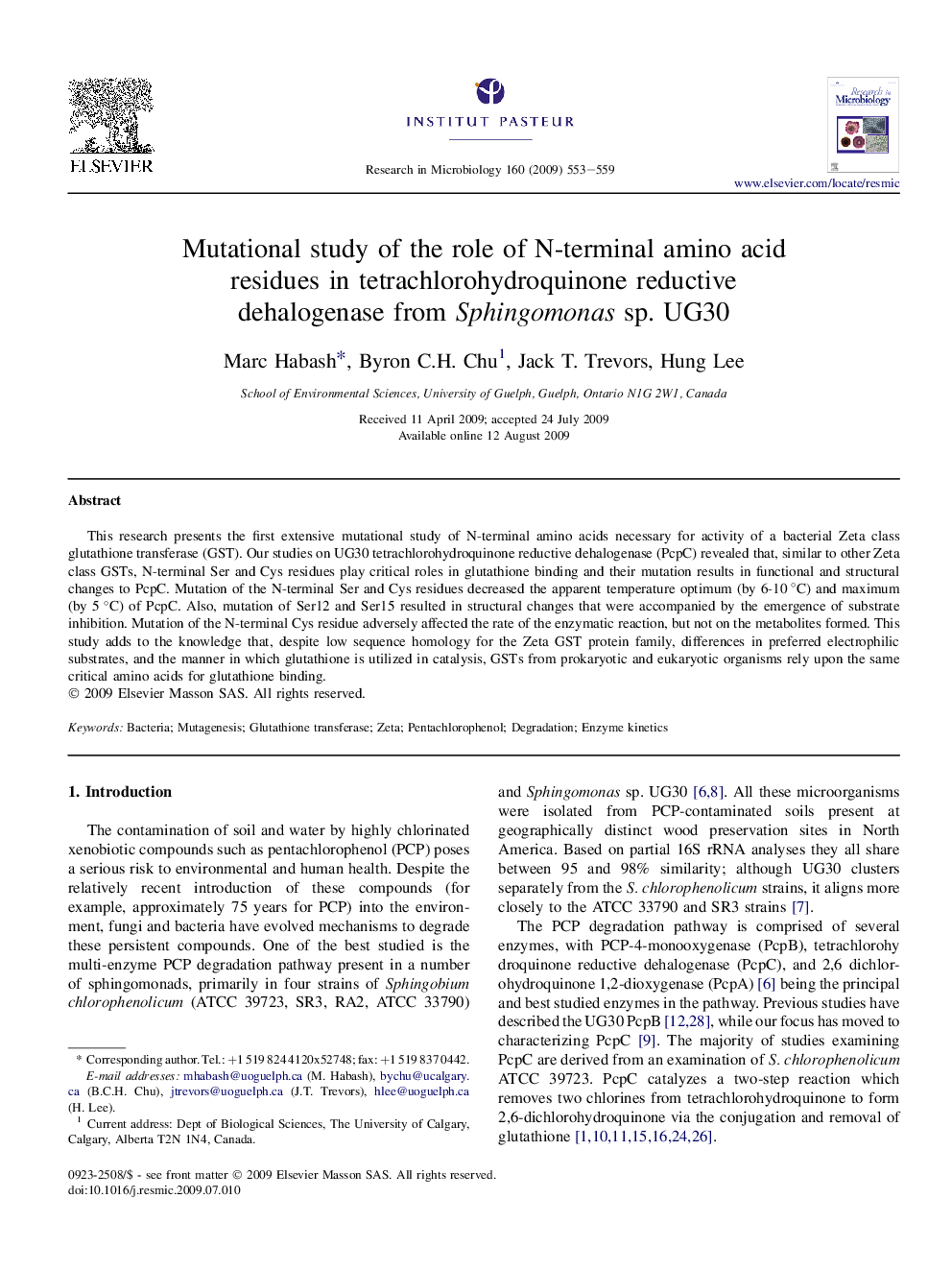| Article ID | Journal | Published Year | Pages | File Type |
|---|---|---|---|---|
| 4359173 | Research in Microbiology | 2009 | 7 Pages |
This research presents the first extensive mutational study of N-terminal amino acids necessary for activity of a bacterial Zeta class glutathione transferase (GST). Our studies on UG30 tetrachlorohydroquinone reductive dehalogenase (PcpC) revealed that, similar to other Zeta class GSTs, N-terminal Ser and Cys residues play critical roles in glutathione binding and their mutation results in functional and structural changes to PcpC. Mutation of the N-terminal Ser and Cys residues decreased the apparent temperature optimum (by 6-10 °C) and maximum (by 5 °C) of PcpC. Also, mutation of Ser12 and Ser15 resulted in structural changes that were accompanied by the emergence of substrate inhibition. Mutation of the N-terminal Cys residue adversely affected the rate of the enzymatic reaction, but not on the metabolites formed. This study adds to the knowledge that, despite low sequence homology for the Zeta GST protein family, differences in preferred electrophilic substrates, and the manner in which glutathione is utilized in catalysis, GSTs from prokaryotic and eukaryotic organisms rely upon the same critical amino acids for glutathione binding.
